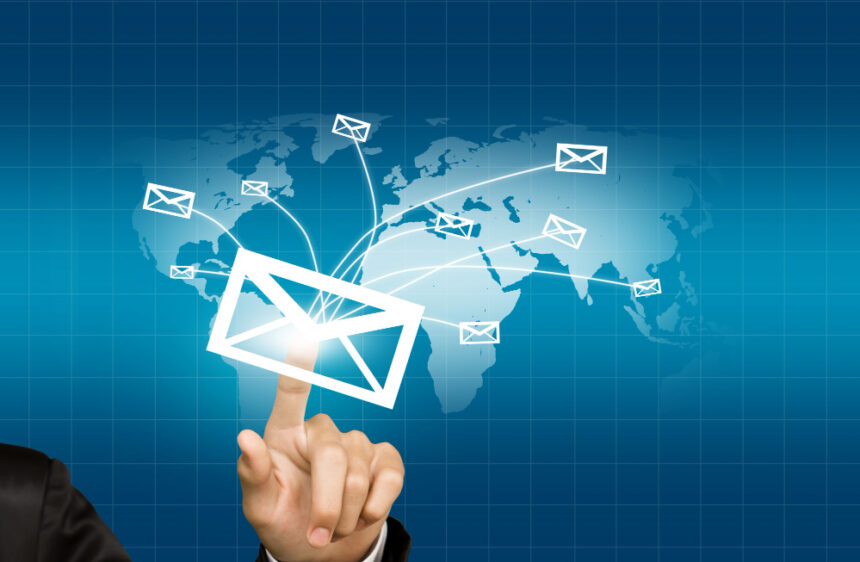In an era where social media platforms and instant messaging dominate the digital communication space, email marketing still holds a significant position. It is not only cost-effective but also one of the most direct and personalized methods to reach an audience. While newer platforms have their allure, email continues to be the cornerstone of successful digital marketing strategies due to its high return on investment (ROI).
Email marketing allows businesses to directly communicate with consumers, providing timely updates, exclusive offers, and personalized content that fosters brand loyalty. As the digital world becomes more crowded and competitive, brands must leverage every tool available to maintain and grow their customer base—and email marketing remains one of the most potent tools in that arsenal.
The Evolution of Email Marketing
Email marketing has come a long way since its inception in the late 1970s. Initially perceived as a simple communication tool, it has evolved into a sophisticated strategy involving automation, segmentation, and data analytics. Businesses now use email platforms that integrate seamlessly with customer relationship management (CRM) tools, offering a data-driven approach to customer engagement.
The introduction of artificial intelligence (AI) and machine learning has further revolutionized email marketing. Marketers can now predict customer behavior, personalize messages, and automate campaign scheduling to maximize engagement. These technological advancements have helped email marketing retain its effectiveness, even as digital trends shift.
Why Email Marketing Is Essential for Business Growth
Email marketing is vital for businesses of all sizes because it delivers measurable results. Unlike traditional marketing channels, email marketing allows companies to track open rates, click-through rates, conversions, and more. These insights enable continuous optimization of campaigns, ensuring better performance over time.
Moreover, email marketing fosters customer retention. It keeps your brand top-of-mind and helps nurture long-term relationships. With the right strategy, it can turn a one-time buyer into a loyal customer who advocates for your brand.
Building a Robust Email List
A successful email marketing campaign begins with a high-quality email list. This list should consist of individuals who have expressed interest in your brand, either by signing up on your website, downloading content, or making a purchase. Organic list-building methods, such as offering valuable lead magnets, are far more effective than purchasing email lists, which often lead to poor engagement and deliverability issues.
Segmenting your list based on user behavior, demographics, and interests allows for more targeted and relevant communication. This increases the likelihood of engagement and conversion, as recipients receive content that aligns with their preferences.
Crafting Compelling Email Content
The success of an email marketing campaign hinges on the quality of its content. Each email should provide value to the recipient—whether it’s an insightful blog post, a special offer, or an update on new products or services. Subject lines should be attention-grabbing, while the body of the email should be clear, concise, and action-oriented.
Using visuals, interactive elements, and compelling calls to action (CTAs) can significantly enhance user experience and drive higher engagement rates. Personalization also plays a crucial role. Emails that address the recipient by name and tailor content based on past interactions are more likely to be opened and acted upon.
The Role of Automation in Email Marketing
Email marketing automation allows businesses to send timely, personalized messages to users based on specific triggers. For example, a welcome email can be automatically sent when someone subscribes, or a follow-up email can be triggered if a customer abandons their shopping cart.
Automation not only saves time but also ensures consistency in communication. By setting up workflows, businesses can maintain continuous engagement without manual intervention, leading to increased efficiency and better customer experiences.
Analyzing Performance Metrics

One of the major advantages of email marketing is its measurability. Marketers can analyze a range of performance metrics to evaluate the effectiveness of their campaigns. Open rates indicate how many people are engaging with subject lines, while click-through rates show the effectiveness of CTAs.
Conversion rates help assess the campaign’s overall impact on business goals, whether it’s generating sales, leads, or sign-ups. Bounce rates and unsubscribe rates can also provide valuable feedback for refining your strategy. Regular analysis of these metrics allows for data-driven decision-making and continuous improvement.
Compliance and Best Practices
With growing concerns about data privacy, adhering to regulations like the General Data Protection Regulation (GDPR) and the CAN-SPAM Act is more important than ever. Always ensure that your recipients have opted in to receive your emails and provide an easy way for them to unsubscribe.
Using double opt-ins, maintaining a clean email list, and clearly stating your intentions in every communication can help build trust and maintain compliance. Ethical email marketing not only protects your business legally but also enhances your reputation among consumers.
Integrating Email with Other Marketing Channels
While email marketing is powerful on its own, it becomes even more effective when integrated with other marketing channels. Combining email with social media, content marketing, and paid advertising creates a cohesive strategy that reinforces your brand message across different touchpoints.
For example, you can promote your email newsletter on social media or use paid ads to drive more sign-ups. Similarly, you can repurpose blog content into email newsletters to drive traffic back to your website. This integrated approach ensures maximum reach and engagement.
Future Trends in Email Marketing
The future of email marketing is promising, with new technologies continually emerging to enhance its effectiveness. AI and predictive analytics will further improve personalization, while interactive emails will offer a more engaging user experience.
We can also expect increased use of user-generated content, AMP (Accelerated Mobile Pages) for faster loading, and enhanced mobile optimization. As consumer expectations evolve, businesses must stay ahead of the curve by adopting these innovations.
Conclusion: Email Marketing as a Long-Term Asset
In conclusion, email marketing remains one of the most powerful tools for driving conversions in the digital age. Its ability to deliver personalized, timely, and relevant content makes it indispensable for businesses aiming to grow and retain their customer base.
With the right strategy, tools, and adherence to best practices, email marketing can deliver exceptional results. As digital marketing continues to evolve, businesses that prioritize and innovate their email marketing efforts will be well-positioned for long-term success.

